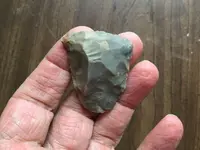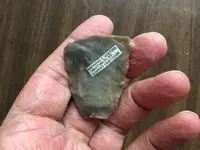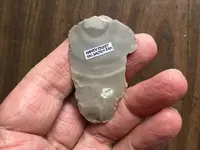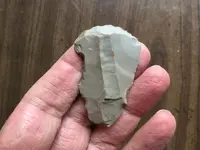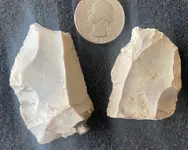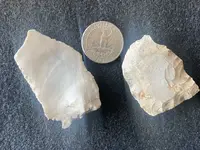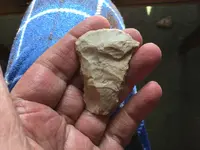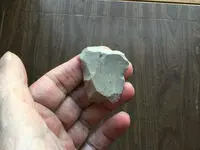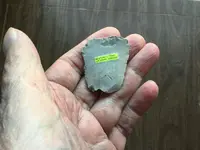uniface
Silver Member
- Joined
- Jun 4, 2009
- Messages
- 3,216
- Reaction score
- 2,905
- Golden Thread
- 0
- Location
- Central Pennsylvania
- Primary Interest:
- Other
Back when it was normal and expected that archaeologists (or at least the heavy hitters in the field) would assemble the information they had into a "big picture" (instead of cherry picking it to advance some agenda), Don Dragoo of Carnegie Institute, one of the heaviest, used (perhaps, coined) the term "AquaPlano" with reference to the western point types (like Agate Basin) and their analogues (Scottsbluff/Hardin) found in the east back when Folsom was showing up as far from home as Arkansas as having resulted from the great drought which had dried up the pluvial lakes, forcing the wildlife there (and the people who depended on it) to migrate, following the habitable margin's retreat.
It took me an embarrassingly long time to understand Tony Baker's description (and illustrations) of Paleo endscrapers (in his famous articles about them at ele.net. The wayback machine can probably access them) as "about the size of a silver dollar," since those of Clovis and its eastern analogues are about the size of a quarter. The light didn't dawn until I remembered him describing point types like Balen as being from the Paleo era -- IOW, he was using the term with reference to survival strategy (1. Find buffalo. 2. Kill buffalo. 3. Eat buffalo. 4. Repeat) (which makes no sense to me, seeing as this continued into historical times, plains tribes having only improved it by adding horses and firearms).
So the eastern analogue of his "Paleo" Balen scrapers (all of the examples he illustrated fall outside Clovis/folsom parameters) were our eastern AquaPlano scrapers which, puzzlingly large, don't fit into any other cultural inventory I know of. Supporting (and reinforcing) this association is Converse (1963) having assigned such large, heavy blade tools as illustrated in that thread to the Plano era. Contemporary, then, with Dalton, but independent of it (as a glance at the big frame of Dalton endscrapers Pete Bostrum shows @ lithic casting lab shows).
That, at any rate, is the way I understand (or, think I do) those which follow, posted for the ten or so people here who seem to care much about such stuff.
On with the show then:
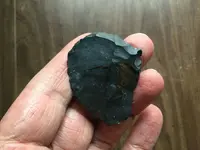
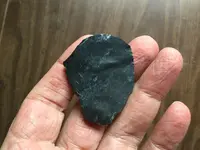
Coshocton chert (Ohio). Note the spur @ right -- a supporting age indicator.
It took me an embarrassingly long time to understand Tony Baker's description (and illustrations) of Paleo endscrapers (in his famous articles about them at ele.net. The wayback machine can probably access them) as "about the size of a silver dollar," since those of Clovis and its eastern analogues are about the size of a quarter. The light didn't dawn until I remembered him describing point types like Balen as being from the Paleo era -- IOW, he was using the term with reference to survival strategy (1. Find buffalo. 2. Kill buffalo. 3. Eat buffalo. 4. Repeat) (which makes no sense to me, seeing as this continued into historical times, plains tribes having only improved it by adding horses and firearms).
So the eastern analogue of his "Paleo" Balen scrapers (all of the examples he illustrated fall outside Clovis/folsom parameters) were our eastern AquaPlano scrapers which, puzzlingly large, don't fit into any other cultural inventory I know of. Supporting (and reinforcing) this association is Converse (1963) having assigned such large, heavy blade tools as illustrated in that thread to the Plano era. Contemporary, then, with Dalton, but independent of it (as a glance at the big frame of Dalton endscrapers Pete Bostrum shows @ lithic casting lab shows).
That, at any rate, is the way I understand (or, think I do) those which follow, posted for the ten or so people here who seem to care much about such stuff.
On with the show then:


Coshocton chert (Ohio). Note the spur @ right -- a supporting age indicator.
Last edited:
Upvote
0



